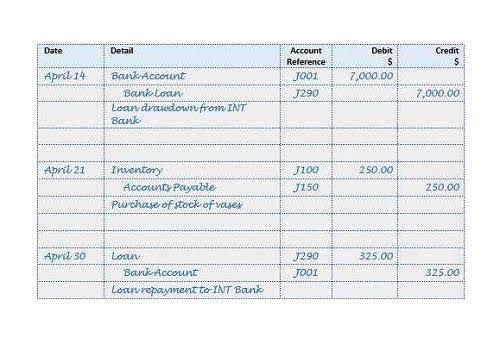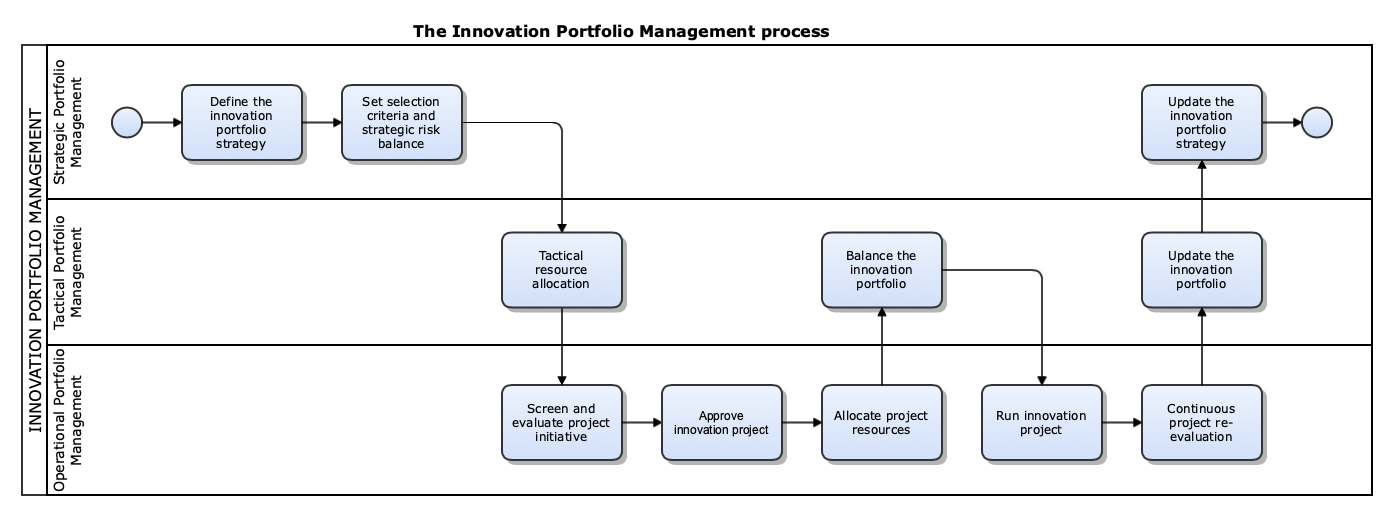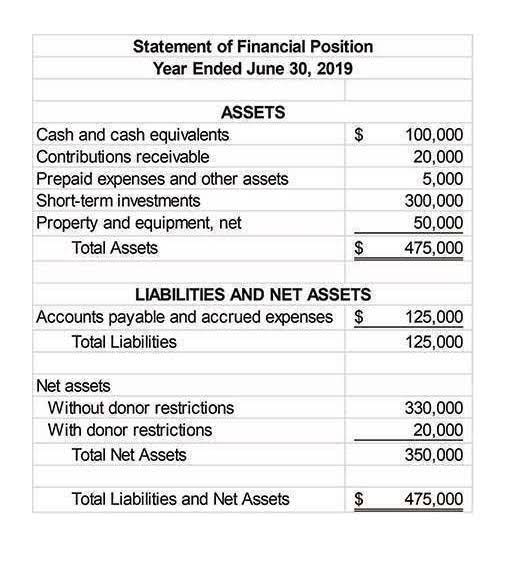
This number is important to potential investors because it helps them understand your net worth. If they see steady growth in your shareholders’ equity through increased retained earnings, your company may be an appealing investment. Is the net amount of your company’s total assets and liabilities. If you take out a loan, for example, you’ll have cash in the bank, but that’s not revenue. It does, however, impact the available funds you have to operate your business. There has been an increase in the income or profit by the amount credited. Or there has been a reduction in the expense or loss by the amount credited.
- This appears to go directly against everything we just discussed about debits and credits.
- All accounts that normally contain a debit balance will increase in amount when a debit is added to them, and reduced when a credit is added to them.
- T-accounts are used by accounting instructors to teach students how to record accounting transactions.
- Then, use the ledger to calculate the ending balance and update your balance sheet.
- For illustration, assume that ABC Company has $5000 cash, $7000 inventory, $3000 capital stock, and $9000 surplus.
- Save money without sacrificing features you need for your business.
In this context, debits are good and credits would not be good. On a balance sheet, positive values for assets and expenses are debited, and negative balances are credited. The ending balance in each account should be transferred to the balance sheet. This separate financial statement is named such because it Accounting: Making Sense of Debits and Credits! must always stay in balance. Ultimately, the overall assets in your business must equal the value of your liabilities plus your equity, as the previous equation indicates. Many business owners who are not familiar with accounting can quickly become confused about the difference between a debit or credit.
Which Types Of Accounts Normally Have Debit Balances, And Which Have Credit Balances?
The credit balance is the sum of the proceeds from a short sale and the required margin amount underRegulation T. The debit amount recorded by the brokerage in an investor’s account represents the cash cost of the transaction to the investor. The concept of debits and offsetting credits are the cornerstone of double-entry accounting. The total number of debits must always equal the total number of credits. Debits are the use of value for a transaction and credits are the source of value for a transaction. If you pay cash for equipment for your business, the value you received was the equipment and the source of that value was the cash you paid for that equipment . A common way that accountants often use to remember whether to credit or debit an account is using DC ADE LER.
The value of an asset that is being credited has decreased or the firm has disposed of a part or the entire asset. Well, you should always remember that if there lies an open book in front of you and it is you who look at the book and not the book looks at you. Hence, your left-hand side will be the left side and your right-hand side will be the right side.

A company’s revenue usually includes income from both cash and credit sales. Expense accounts are items on an income statement that cannot be tied to the sale of an individual product. Of all the accounts in your chart of accounts, your list of expense accounts will likely be the longest.
What Is Debit?
Debits are money going out of the account; they increase the balance of dividends, expenses, assets and losses. Credits are money coming into the account; they increase the balance of gains, income, revenues, liabilities, and shareholder equity. The cost of goods sold of $2,800 decreases the inventory, and is therefore a credit entry. It will have a corresponding $2,800 debit entry from Surplus. The $500 expenses paid in cash decreases the debit account Cash, so you would enter $500 credit in the Cash account.
- Expenses and Dividends have a minus sign because they are debit entries, representing decreases in equity.
- Double-entry accounting states that for every financial transaction recorded at least two accounts in your chart of accounts are affected—and they’re affected in equal and opposite ways.
- Your “furniture” bucket, which represents the total value of all the furniture your company owns, also changes.
- Debits and credits are used in a company’s bookkeeping in order for its books to balance.
- A debit card is used to make a purchase with one’s own money.
- The impact on a bank account from revenue and expenses is an offsetting debit or credit.
- While this may be confusing to those who are not accountants, becoming more comfortable with these accounting principles will make this process easier.
You might think of D – E – A – L when recalling the accounts that are increased with a debit. Accounting automation to give you more accurate, streamlined financial management. In the lending arena, credit denotes a set amount of money you are willing to loan and have a customer owe you for goods or services rendered. DateAccountDebitCreditX/XX/XXXXAccountXOpposite AccountXAgain, equal but opposite means if you increase one account, you need to decrease the other account and vice versa. Please feel free to submit it to William Brighenti, Certified Public Accountant, Hartford CPA Accountants. For information and assistance on any tax and accounting issue, please visit our website, Accountants CPA Hartford, and our blog, Accounting and Taxes Simplified. Of course, these two components—the total amount of what has been entrusted to or owed by one, and the total amount of who loaned or entrusted the what—should always be equal.
The liability and equity accounts are on the balance sheet. Debits and credits are used in a company’s bookkeeping in order for its books to balance. Debits increase asset or expense accounts and decrease liability, revenue or equity accounts. When recording a transaction, every debit entry must have a corresponding credit entry for the same dollar amount, or vice-versa. Because these two are being used at the same time, it is important to understand where each goes in the ledger.
Balance Sheet
When total debits are greater than total credits, the account has a debit balance, and when total credits exceed total debits, the account has a credit balance. When the trial balance is drawn up, the total debits must be equal to the total credits across the company as a whole . If they are not equal, then you know that an error has occurred.

The Profit and Loss report is important in that it shows the detail of sales, cost of sales, expenses and ultimately the profit of the company. Most companies rely heavily on the profit and loss report and review it regularly to enable strategic decision making.
Credits And Debits
Regardless of what elements are present in the business transaction, a journal entry will always have AT least one debit and one credit. You should be able to complete the debit/credit columns of your chart of accounts spreadsheet . The most crucial element in accounting is that every transaction entails equal offsetting amounts. Simply put, the total of all debits must equal the sum of all credits.
Most people have difficulty grasping the terms debit and credit. But understanding the meaning of these words in accounting delivers an improved process for comprehending and resolving errors. A debit credit example in this case would be if the company takes out a loan for $3,000. In this case, the cash account is debited for $3,000, while a credit entry is also logged in the loans payable account as an increase of $3,000. The credit entry shows that the company now owes $3,000 in loans payable but the debit entry shows the company also now has the $3,000 in cash available to spend.
Debits and credits, used in a double-entry accounting system, allow the business to more easily balance its books at the end of each time period. The most basic accounting principles to understand in terms of debit vs credit is that a debit transaction increases an asset or expense account, such as depositing cash into your business account. A credit transaction, on the other hand, decreases an asset or expense account.
Content: Debit Vs Credit In Accounting
Clearly related to our namesake, Debitoor allows you to stay on top of your debits and credits. Because most accounting and invoicing software prevents the need for a double-entry bookkeeping system, your debits and credits are adjusted automatically according to your expenses and income.
- Every business’s financial statements should include financial accounts that record business transactions.
- It has increased so it’s debited and cash decreased so it is credited.
- Business accounting can be a complicated undertaking, but it’s essential to keep all financial transactions in order.
- Debits are recorded on the left side of the T-accounts, while credits are recorded on the right side of the T-accounts.
- Accounting debit and credits look a little different when it comes to liability accounts, which are accounts that show the money a company owes, such as wages, loan payments and supplier payments.
In the double-entry system of bookkeeping, you have two columns for entering your transactions. A basic understanding is that an entry to the left side column is Debit, and an entry to the right side column is Credit. So for every debit, there is a corresponding credit of an equal amount.
Conversely, when you pay a bill – which debits an expense – the offset is a credit on your bank account ledger. Thus, credits on your bookkeeping for a bank account lower the cash balance. If your company deposits $100 into its checking account at the bank, the bank is receiving cash of $100 and will debit its general ledger cash account for $100, thereby increasing the bank’s assets. Because the bank also follows the accounting principles of double-entry accounting, they will also enter a credit of $100 in your business’ checking account. The bank has not “earned” $100, but rather has an obligation and liability to return this $100 to you on demand whenever you as a business owner decide to withdraw it from the bank.

Credits are right entered on the right of an accounting entry. This means, that money does not just appear in your bank account nor does it just disappear into thin air from time to time. In finance there is always a source and a destination of funds – you can not have one without the other. In other words financial resources ‘flow’ from one place to another and the ‘Debits and Credits’ system completes this record of financial funds movement.
Understanding Debits And Credits In Accounting
This appears to go directly against everything we just discussed about debits and credits. In business accounting, debiting a cash account increases its balance, but the banker just indicated that he or she is crediting your checking account to increase its balance. It’s no wonder that this is confusing to a layperson who is new to these accounting practices. However, in truth, the banker is still adhering to the principles of accounting. Debits usually denote the usage of one account, and credits usually denote the source of another account.
A debit note or debit receipt is very similar to an invoice. The main difference is that invoices always show a sale, where debit notes and debit receipts reflect adjustments or returns on transactions that have already taken place. Note that debits are always listed first and on the left side of the table, while credits are listed on the right. Smaller firms invest excess cash in marketable securities which are short-term investments.
It is first important to understand that the words credit and debits really do not have any meaning as to increasing or decreasing value. The meaning assigned to them is based https://accountingcoaching.online/ on their purpose in the context of the user. For bank accounting, the context for a debit and credit differs from what the public may generally understand that context to be.
In the particulars column of the debit side, we enter the account’s name from which the benefit is received. The word ‘To‘ is affixed to the name of the account recorded on the credit side. Since the accounts must always balance, for every transaction there is going to be a debit made to one or more accounts and a credit made to one or more accounts. In accounting terminology, the individual who receives the benefit is debited as he is placed under an obligation. On the contrary, the one who provides or gives a benefit is credited because he is entitled to a return of the obligation.
Debits And Credits Outline
The total of the debits must always equal the total of the credits. Most modern accounting software won’t even let you submit the entry if the debits and credits don’t balance. This may seem to oppose the traditional meanings for debit and credit, where a debit generally takes away from, while a credit adds to. With debits and credits in accounting, however, debits represent money coming into an account, while credits represent money going out. The process of using debits and credits creates a ledger format that resembles the letter „T“.















